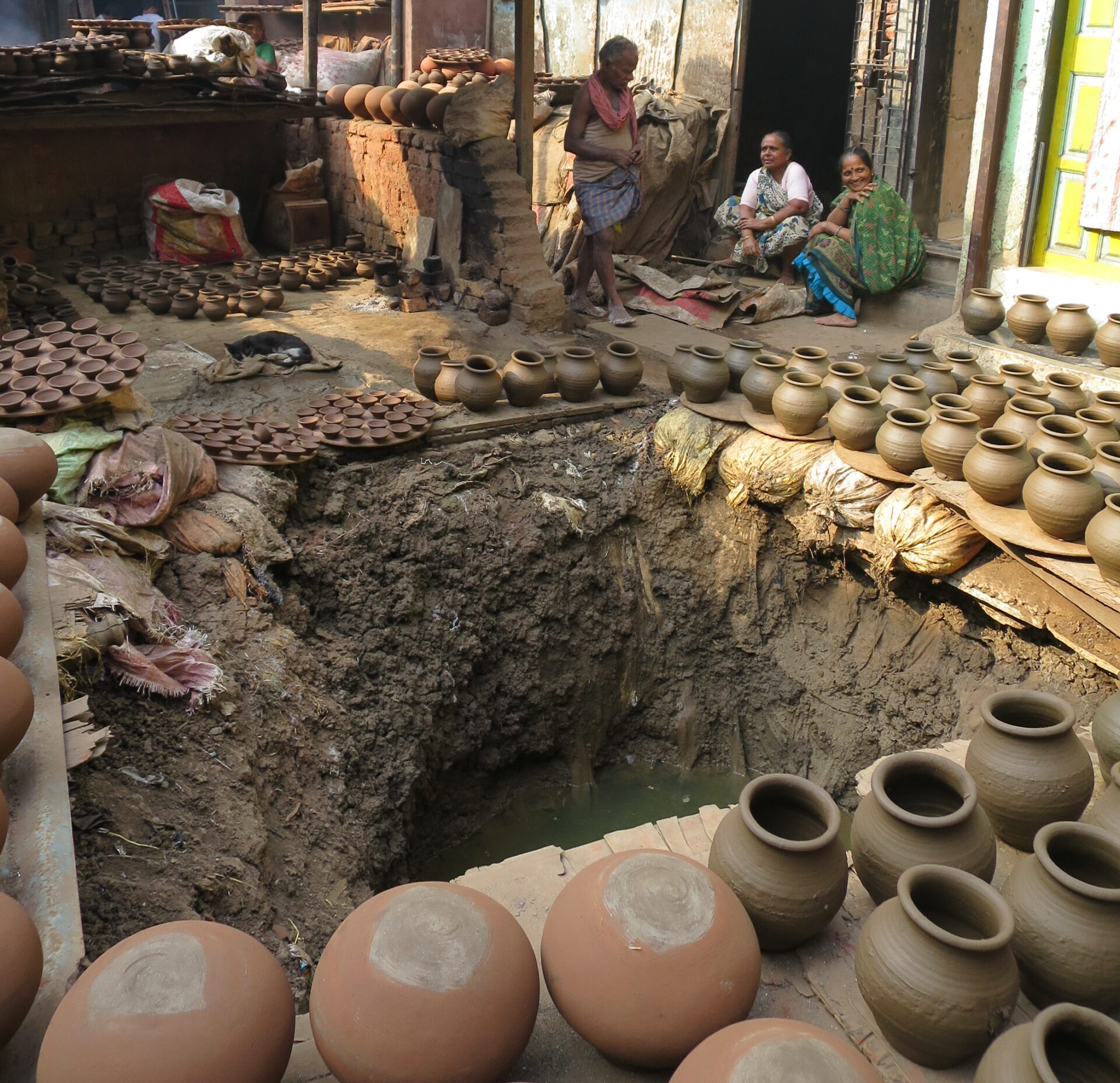
See below the video for a short essay written by Rashi Jain, which delves into the rich history and significance of this artistic haven while exploring the challenges the Mumbai Potters community faces amidst the city's ongoing redevelopment.
Postcard from Kumbharwada
BY: RASHI JAIN
Kumbharwada, the traditional potter’s community of Mumbai, is amidst a densely populated pocket measuring 210.43 hectares, in Dharavi. Once known as the largest slum of the world, this land mass has been eyed by political parties and builders for redevelopment over the last two decades. Dharavi is home to many flourishing small industries–pottery, leather processing, garment manufacturing, packaged snacks, to name a few.
‘Kumbhar’ means ‘potter’, and ‘wada’ is ‘colony’, in Hindi. Traditionally, one is born into a potter’s caste and passes their skills through generations. The traditional potters of Kumbharwada migrated from Saurashtra and Kutch in Gujarat towards the end of 1800s to Mumbai, as it was emerging as a strategic port city and financial hub in feudal India, with the East India Company and European annexation having set in.
The potters of Kumbharwada produce terracotta diyas (oil lamps; up to a thousand a day), paddled water pots, mould pressed planters, and lanterns with traditional cut work; catering to a local market, festivals around the year and exports worldwide. Terracotta clay comes in truck loads from the neighbouring state of Gujarat and farm lands from the outskirts such as Virar and Mumbra. The entire family is involved in the production. Men throw large forms in a matter of seconds on a wooden hand spun wheel and more recent, an electric wheel. Women wedge clay, burnish, slip decorate, load-unload the kiln and hand deliver wares to vendors and shop fronts adjoining their homes. To meet the production volume, migrant labour who flock into Mumbai across India by the thousand a day, have become an integral part of various processes.
Houses in Kumbharwada are narrow and an alleyway connects a square shaped common kiln area between rows of homes. The ground floor is the workstation and the upper floor, the residence. The area is densely populated, and the smoke rising from the brick kilns fired with cloth waste spreads in the alleyways. There have been attempts to upgrade the kilns in fuel efficiency, and some have managed to scale up with gas firing. Factors of technical support, urban policies and lack of investment are their biggest hurdles. Supporting the existence of this community is important, for they have moulded as the city has grown, and are exceptionally skilled in producing volume for a populous metropolitan.
Due to rising costs and low returns in a growing capitalist environment, there has been a decline in the younger generation inheriting the craft of pottery, downsizing the two thousand practising families to a mere hundred. Traditionally, potter colonies are community settlements. The redevelopment plan of Dharavi may possibly break this cluster into individual units outside of the city, thereby uprooting their identity and disrupting co-existence with shared resources. This may force the units to produce mechanised pottery, which may be devoid of the design ingeniously achieved best from the perfect hand and skilled paddling of a potter. The future of this community is uncertain and the last of the potter families find ways to adapt to the needs of a fast urban society, fishing for opportunities in the restaurant and education industry, and the popularity of clay with an emerging studio potter’s movement. The potters of Kumbharwada realise the need to evolve with the times in order to grow sustainability within an urban setting. There is an urgent need to survey and support the transition of the firing practices, while the families are still stationed in the city.
The traditional potter in India has been integral in sustaining a holistic lifestyle with locally sourced material through handcrafted utilitarian terracotta objects. They have also been preserving the diverse cultural heritage in its crafts, rooted in festive rituals, storytelling and spirituality. Tradition evolves with necessity, but it is carried forward when its fundamentals and essence are preserved. Can we not bring change imbibing the wisdom of these age-old traditions? Can we not stay with the touch of the earth, the sustainable and the handmade?
‘Postcard from Kumbharwada’, is a short film; a collaborative production between ceramic artist, Rashi Jain and filmmakers, Sujeet Anand, Shubhangi Singh and Akanksha Gupta, Made in 2008.
